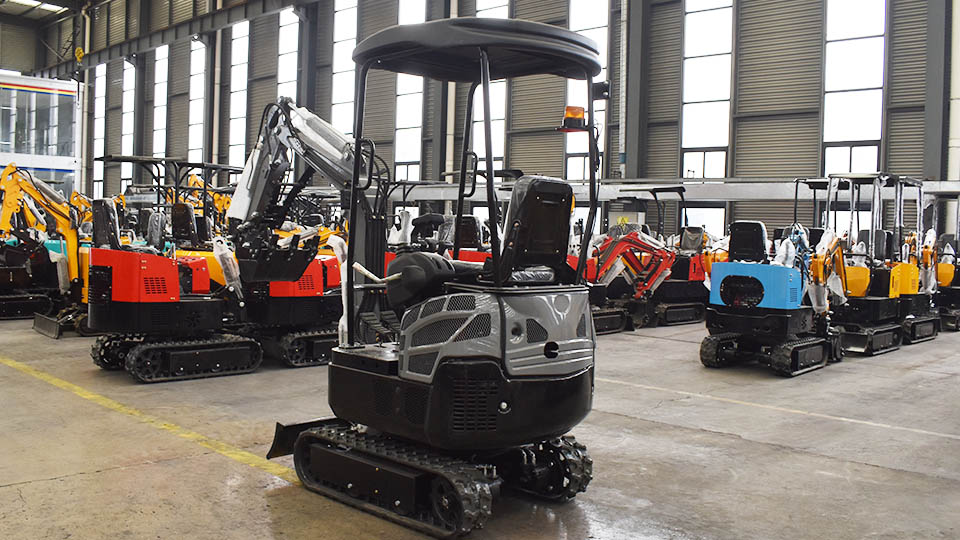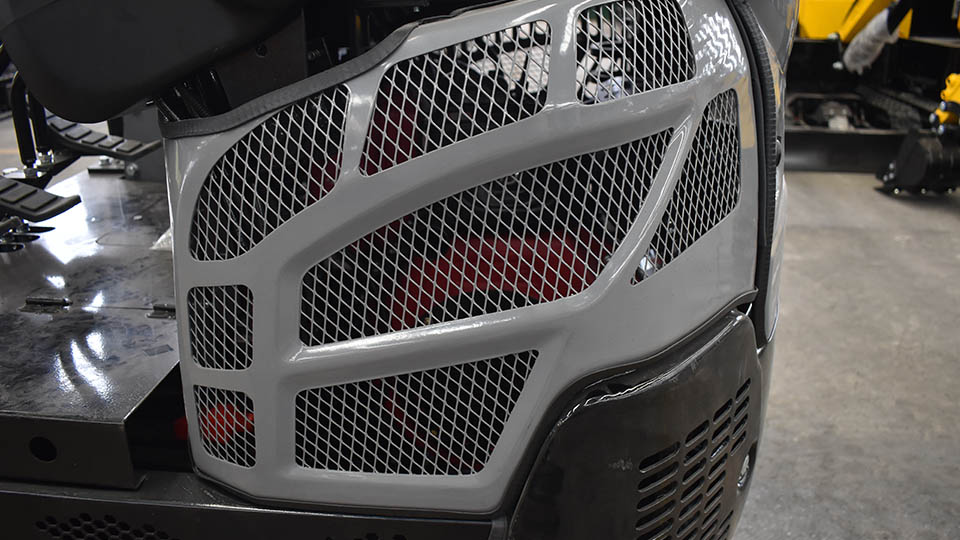I. Defining Your Needs: The Foundation of Your Purchase
Before even looking at specific models, the most crucial step is to meticulously define your operational requirements. This introspection will narrow down your choices and prevent overspending or under-equipping.
A. Application and Job Scope:
What will the excavator primarily be used for?
Digging and Trenching: Standard excavators excel here. Consider the required digging depth and reach.
Material Handling: Are you loading trucks, moving aggregates, or sorting demolition debris? This might necessitate specific bucket types, grapples, or even specialized material handlers.
Demolition: High-reach demolition excavators with enhanced safety features and specialized attachments (e.g., hydraulic breakers, pulverizers) are designed for this.
Landscaping/Residential Projects: Mini or compact excavators are ideal for tight spaces, minimal ground disturbance, and tasks like stump removal or small-scale trenching.
Mining/Quarrying: Large and ultra-class excavators with heavy-duty components and massive digging forces are required for these demanding environments.
Forestry: Specialized forestry excavators with feller bunchers, delimbers, or grapples are designed for tree harvesting.
B. Site Conditions and Terrain:
Space Constraints: How much room will you have to maneuver? Urban jobsites, indoor work, or densely forested areas demand compact or zero-tail-swing models.
Ground Conditions: Soft ground, rocky terrain, or wetlands will influence track type (standard steel, rubber, or wider low-ground-pressure tracks) and undercarriage robustness.
Slope and Stability: For working on inclines, stability is paramount. Consider the machine's center of gravity and counterweight design.

C. Required Power and Performance:
Digging Force (Breakout Force): How tough is the material you'll be digging? Clay, rock, or frozen ground require higher breakout forces.
Lifting Capacity: Will you be lifting heavy pipes, concrete slabs, or other materials? Check the machine's lifting charts at various reaches.
Cycle Times: For high-volume work, faster cycle times (digging, swinging, dumping) are critical for productivity. This is influenced by hydraulic flow and engine power.
D. Transport and Logistics:
Transport Weight and Dimensions: Can the excavator be transported easily on existing trailers? Large machines often require specialized permits and multi-axle trailers, significantly increasing transport costs.
Road Restrictions: Be aware of weight and height restrictions on local roads if you plan to move the excavator frequently between sites.
II. Key Technical Specifications and Features
Once your needs are clear, delve into the technical specifications that will directly impact performance and suitability.
A. Size and Operating Weight:
Mini Excavators (1-6 tons): Excellent for small-scale projects, confined spaces, and landscape work.
Compact Excavators (7-10 tons): Versatile for general construction, utilities, and some demolition.
Medium Excavators (11-25 tons): The workhorses for most civil engineering, road building, and commercial construction projects.
Large Excavators (26-45+ tons): Designed for heavy earthmoving, large infrastructure, and quarrying.
B. Engine and Emissions:
Horsepower (HP): Directly correlates with power for digging, lifting, and hydraulic flow. Match HP to the demands of your applications.
Fuel Efficiency: Modern engines, especially those with advanced electronic controls and power management modes, offer significant fuel savings over the machine's lifespan.
Emissions Standards (Tier 4 Final, Stage V): Be aware of the emission regulations in your region. Newer machines complying with stricter standards typically cost more upfront but may offer incentives or be legally required. Older machines might be cheaper but could face restrictions or higher operating costs in certain areas.
C. Hydraulic System:
Hydraulic Flow (GPM/LPM) and Pressure (PSI/Bar): Higher flow and pressure mean more power for attachments and faster cycle times. Ensure the system can adequately power any auxiliary attachments you plan to use.
Auxiliary Hydraulics: Check for the number and type of auxiliary hydraulic circuits (single-acting, double-acting, high-flow) if you intend to use various attachments like breakers, grapples, or mulchers. This is often a critical oversight.
Load-Sensing Hydraulics: This feature optimizes hydraulic power based on demand, improving fuel efficiency and smooth operation.
D. Undercarriage and Tracks:
Track Type:
Rubber Tracks: Ideal for sensitive surfaces (asphalt, concrete) and lighter machines, offering reduced ground disturbance.
Steel Tracks: Standard for heavier machines, providing superior traction and durability in rugged terrain.
Pads: Consider different pad widths (narrow for tight spaces, wide for soft ground) and triple grousers for maximum traction.
Undercarriage Design:
Standard: Sufficient for most applications.
Long Undercarriage (LC): Offers greater stability, especially on slopes or for lifting heavy loads.
Heavy Duty (HD): Reinforced components for extremely abrasive or rocky conditions, offering enhanced durability.
E. Boom, Arm, and Attachment Options:
Boom and Arm Configuration:
Monoboom: Standard, versatile.
Two-Piece Boom (Articulated): Offers greater flexibility for digging close to the machine, working in confined spaces, or reaching over obstacles. Often preferred for urban construction.
Long Reach: Specialized for deep digging or extended reach (e.g., dredging, bank sloping).
Quick Coupler: A hydraulic quick coupler allows for rapid changes of attachments from the cab, significantly improving efficiency. Ensure it's compatible with your desired attachments.
Attachment Compatibility: Verify that the machine's hydraulic flow, pressure, and pin sizes are compatible with your existing or planned attachments.
F. Operator Comfort and Safety:
Cab Design: A comfortable, ergonomic cab reduces operator fatigue, boosting productivity. Look for features like air-suspension seats, climate control, low noise levels, and intuitive controls.
Visibility: Good all-around visibility, potentially enhanced by cameras (rearview, side view), is crucial for safety.
Safety Features: ROPS (Roll-Over Protective Structure) and FOPS (Falling Object Protective Structure) are standard for operator protection. Look for additional features like emergency stops, seatbelt interlocks, and object detection systems.
Serviceability: Easy access to daily checkpoints (fuel, oil, coolant), filters, and grease points simplifies maintenance and reduces downtime.
III. Assessing Condition (For Used Excavators)
Buying a used excavator can offer significant cost savings, but it comes with higher risks. A thorough inspection is paramount.
A. Visual Inspection (Walk-Around):
Exterior: Look for obvious damage, excessive rust, or poor repairs. Misaligned panels or fresh paint in certain areas might hide structural issues.
Leaks: Check for oil, fuel, or hydraulic fluid leaks around cylinders, hoses, pumps, and engine.
Welds: Inspect all major welds on the boom, arm, frame, and undercarriage for cracks or poor repairs.
Pins and Bushings: Excessive play (wobble) in the pins and bushings of the boom, arm, and bucket linkage indicates significant wear and future repair costs.
B. Undercarriage Inspection:
Tracks: Check the condition of track pads, rollers (idler rollers, carrier rollers), sprockets, and tensioners. Worn components here can be very expensive to replace.
Track Sag: Excessive sag can indicate stretched chains or worn sprockets.
C. Engine and Fluid Checks:
Engine Start-Up: Listen for unusual noises (knocking, grinding), excessive smoke (blue for oil, black for fuel, white for coolant), or difficulty starting.
Fluid Levels and Condition: Check engine oil, hydraulic fluid, and coolant levels. Look for milky appearance (water contamination) or burnt smell.
Air Filter: A dirty air filter can indicate poor maintenance.
D. Hydraulic System Test:
Operation: Operate all hydraulic functions (boom, arm, bucket, swing, travel) smoothly and through their full range of motion. Listen for unusual noises (whining, groaning).
Cylinder Drift: Extend cylinders fully and check for drift (slow retraction without input) which indicates worn seals.

Power and Speed: Assess the responsiveness and power of the hydraulics. Is it slow or weak?
E. Swing System:
Swing Bearings: Listen for grinding or popping noises during swing. Check for excessive play in the swing bearing by wiggling the house.
Swing Motor: Ensure smooth and consistent swing speed.
F. Cab and Controls:
Gauges and Lights: Ensure all dashboard gauges and warning lights function correctly.
Controls: Test all joysticks and pedals for smooth operation and responsiveness.
HVAC: Check the heating and air conditioning.
G. Documentation:
Service Records: Request complete service and maintenance records. This provides invaluable insight into the machine's history and how well it was maintained.
Hours Meter: Verify that the hour meter appears consistent with the machine's overall wear and tear.
Owner's Manual: Ensure it's available.
IV. Financial Considerations and Ownership Structure
Beyond the purchase price, consider the long-term financial implications.
A. New vs. Used:
New: Higher upfront cost, full warranty, latest technology, better fuel efficiency, lower initial maintenance, higher resale value.
Used: Lower upfront cost, no or limited warranty, potentially higher maintenance and repair costs, older technology. Offers quicker return on investment if well-maintained and suitable for intermittent use.
B. Purchase vs. Lease/Rent:
Purchase: Full ownership, build equity, suitable for consistent, long-term use. Requires significant capital.
Lease: Lower monthly payments, often includes maintenance, no long-term commitment, good for short-term projects or fluctuating demand. You don't build equity.
Rent: Ideal for very short-term projects, specialized tasks, or when initial capital is limited. Avoids maintenance, storage, and transport headaches. Highest daily/weekly cost.
C. Total Cost of Ownership (TCO):
Look beyond the sticker price. TCO includes:
Purchase Price: The initial investment.
Financing Costs: Interest on loans.
Fuel Consumption: A significant ongoing expense.
Maintenance and Repairs: Scheduled servicing, unexpected breakdowns, parts replacement.
Operator Wages: The cost of skilled labor.
Insurance: Protecting your investment.
Storage and Transport: Costs associated with moving and housing the machine.
Depreciation: The decline in value over time.
Resale Value: How much you can expect to recover when you sell the machine.
D. Warranty and Service Agreements:
New Machines: Understand the warranty terms (duration, coverage, exclusions).
Used Machines: Some dealers offer limited warranties on certified used equipment. Consider extended warranty options if available.
Service Agreements: Often offered by dealers, these can cover scheduled maintenance and repairs for a fixed period, providing predictable costs.
E. Dealer Support and Parts Availability:
Reputation: Choose a dealer with a strong reputation for customer service, parts availability, and technical support.
Proximity: A local dealer can offer quicker response times for service and parts delivery, minimizing downtime.
Parts Inventory: Ask about their parts inventory and lead times for specialized components.
V. Due Diligence and Final Steps
Before signing on the dotted line, perform these crucial checks.
A. Get Multiple Quotes:
Don't settle for the first offer. Contact several dealers, even for the same model, as prices can vary. This also allows you to compare their customer service.
B. Test Drive/Operate:
Always, always operate the excavator yourself (or have a skilled operator do so) before purchasing, especially for used machines. This is the best way to feel for responsiveness, power, and any hidden issues.
C. Independent Inspection (For Used):
For significant used equipment purchases, invest in an independent inspection by a qualified heavy equipment mechanic. Their unbiased assessment can save you from costly surprises down the line.
D. Check References:
If buying from a private seller or a less-known dealer, ask for references from previous customers.
E. Review Contracts Carefully:
Read all purchase, financing, warranty, and service agreements thoroughly. Understand all terms, conditions, and any hidden fees.
F. Consider Attachments:
Factor in the cost of necessary attachments (buckets, breakers, grapples) into your total budget. New attachments can be expensive.
G. Insurance:
Ensure you have adequate insurance coverage from the moment you take possession of the excavator.
Conclusion
Buying an excavator is a complex decision that extends far beyond the initial price tag. By systematically evaluating your needs, scrutinizing technical specifications, thoroughly inspecting the machine (especially for used models), and carefully considering all financial implications, you can make a well-informed choice. A meticulously chosen excavator will not only meet your operational demands but also prove to be a reliable, efficient, and profitable asset for years to come, truly becoming an extension of your business's capabilities.
Post time:Sep-25-2020
